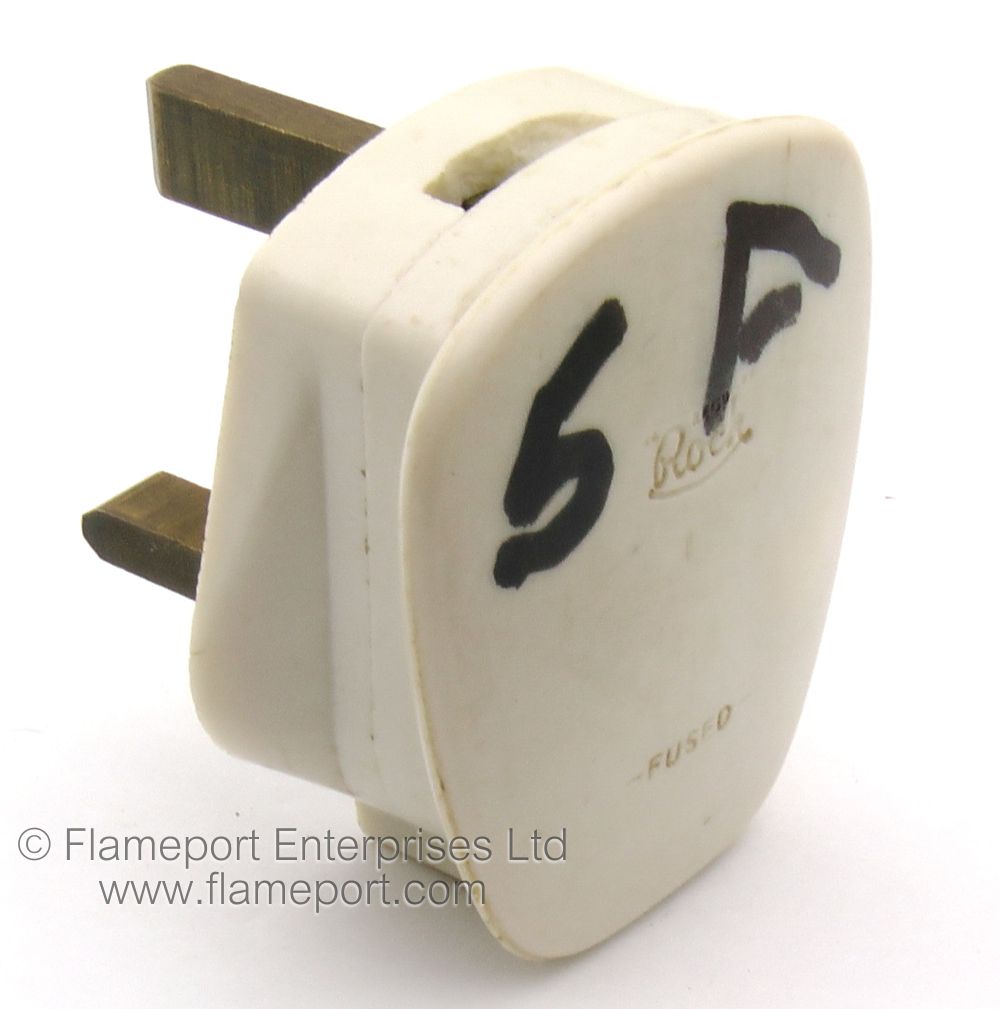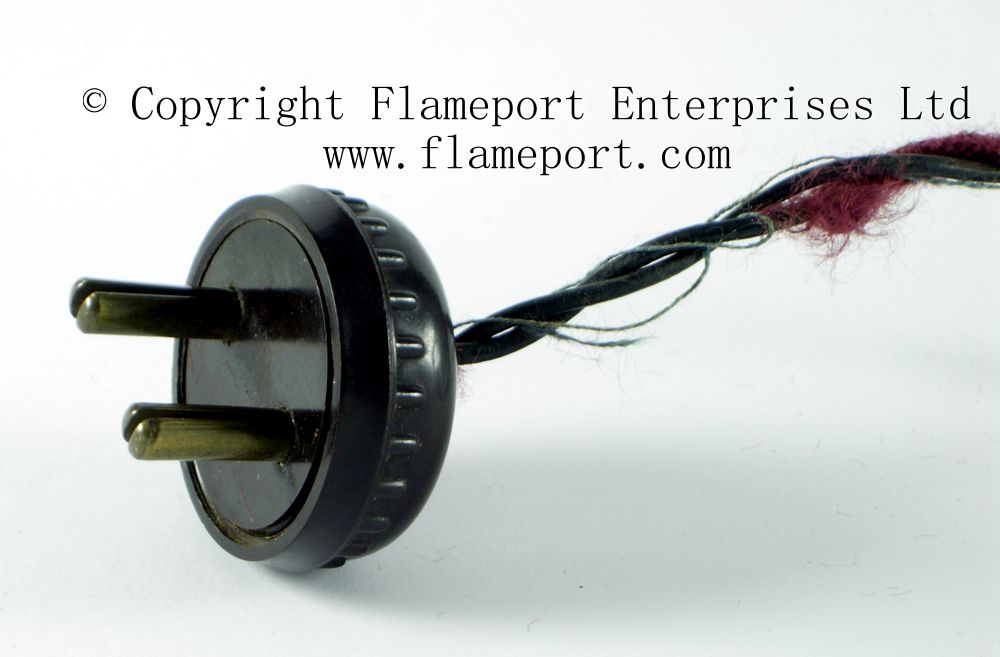Square pins = 'Modern wiring system in use here.'
Here is my reasoning:
In 1947 we had a bewildering selection of round pin sizes in the UK: 3-pin plugs to BS546 in three current ratings: 2A, 5A & 15A.
2-pin versions to BS372 in 2A, 5A and 15A that weren't interchangeable - the spacing was different, you couldn't put a 5A 2-pin plug in a 5A 3-pin socket.
A few 10A still survived, having been part of the Lundberg range that spawned BS73 / BS372.
Manufacturer-specific types included Wandsworth and original MK gauges in various current ratings (MK offered both their own gauge and BS gauge plugs at one time. Theirs were more compact for the same rating).
European plugs based on the 19mm pin spacing would turn up in the UK and loosely fit the 5A 2-pin.
About the only plug on sale that did not have round or modified round pins was the original Wylex type. All in all it was difficult for the householder to be sure of which was which.
With the coming of BS1363 there was a paradigm shift. The size of plug no longer defined the rating of appliance it was to be used with. A fuse was essential due to the 30A circuit rating. The presence of an earth was pretty much guaranteed. The visually distinctive square pins carried the message that this was a new plug or socket using the new system, not just another unknown size. It also permitted a new design of contact and I believe MK patented one form of the socket construction but I would need to look this up carefully to see how the dates indicate the cause and effect in the development path.
The designers of the other competing 13A plugs didn't go this route. The DS plug had modified round pins (the earth was grooved, the line pin was a screw-in cartridge fuse) and closely resembled BS546 5A (it was the most compact of the three). The Wylex 13A was an alteration of their existing system with an ingenious twist. You could plug a new 13A fused plug into an existing 15A Wylex socket (on a 15A radial), but not an unfused 15A plug into a 13A on a 30A ring. The idea presumably was to encourage existing Wylex users to stick with them. Wylex 13A plugs and sockets were engraved with 'Ring Main System' in a circle or similar to distinguish them, without which the 13A and 15A were confusingly similar.
Finally, it could be called a 'square pin plug' and everyone would know what you were talking about, even if they didn't know their amps from their volts. In contrast look at the situation with BS EN 60309, the plug formerly known as BS4343. Some people call it by a brand name (Ceeform, Marechal, Commando) and others by its colour (blue plugs, red plugs). No-one can agree what to call it because it doesn't have an 'official' name (discounting the long-winded title of the standard) nor one outstanding distinguishing feature.















